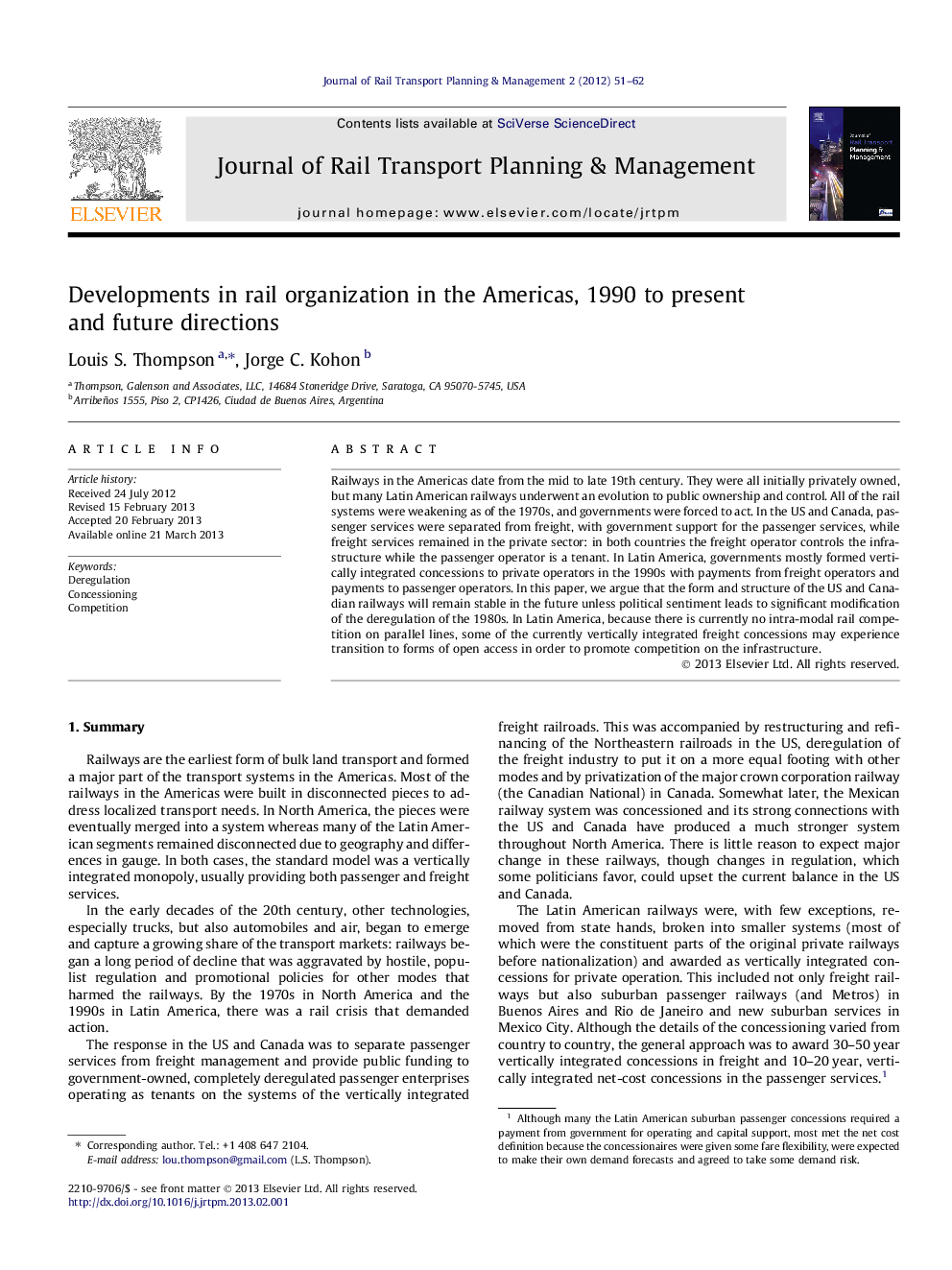| Article ID | Journal | Published Year | Pages | File Type |
|---|---|---|---|---|
| 286463 | Journal of Rail Transport Planning & Management | 2012 | 12 Pages |
Railways in the Americas date from the mid to late 19th century. They were all initially privately owned, but many Latin American railways underwent an evolution to public ownership and control. All of the rail systems were weakening as of the 1970s, and governments were forced to act. In the US and Canada, passenger services were separated from freight, with government support for the passenger services, while freight services remained in the private sector: in both countries the freight operator controls the infrastructure while the passenger operator is a tenant. In Latin America, governments mostly formed vertically integrated concessions to private operators in the 1990s with payments from freight operators and payments to passenger operators. In this paper, we argue that the form and structure of the US and Canadian railways will remain stable in the future unless political sentiment leads to significant modification of the deregulation of the 1980s. In Latin America, because there is currently no intra-modal rail competition on parallel lines, some of the currently vertically integrated freight concessions may experience transition to forms of open access in order to promote competition on the infrastructure.
► We survey the development of rail organizations in South and North America. ► Pressure for change was driven by financial collapse and political neglect. ► Separation of social function from market activities has been critical. ► Deregulation and better use of the private sector has also helped. ► Future organization should be stable, but some vertical separation may be employed.
